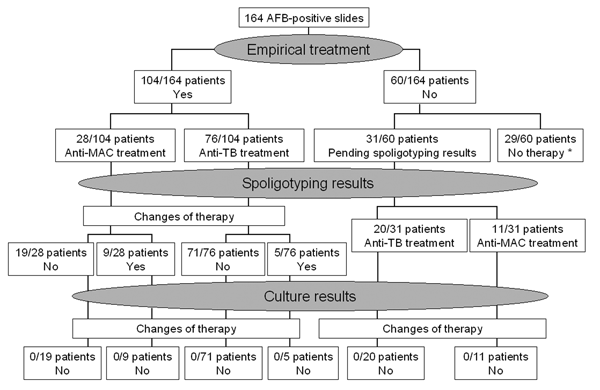Volume 11, Number 8—August 2005
Research
Spoligotyping and Mycobacterium tuberculosis
Figure 1

Figure 1. . . Clinical and therapeutic implications of spoligotyping results in treating suspected mycobacterial diseases. AFB, acid-fast bacilli; pts, patients; MAC, Mycobacterium avium complex; TB, tuberculosis. *Twenty-five patients did not begin treatment because they did not have clinical and radiologic features of tuberculosis. Four patients died within a few days after admission without receiving any antimycobacterial drug.
Page created: April 23, 2012
Page updated: April 23, 2012
Page reviewed: April 23, 2012
The conclusions, findings, and opinions expressed by authors contributing to this journal do not necessarily reflect the official position of the U.S. Department of Health and Human Services, the Public Health Service, the Centers for Disease Control and Prevention, or the authors' affiliated institutions. Use of trade names is for identification only and does not imply endorsement by any of the groups named above.